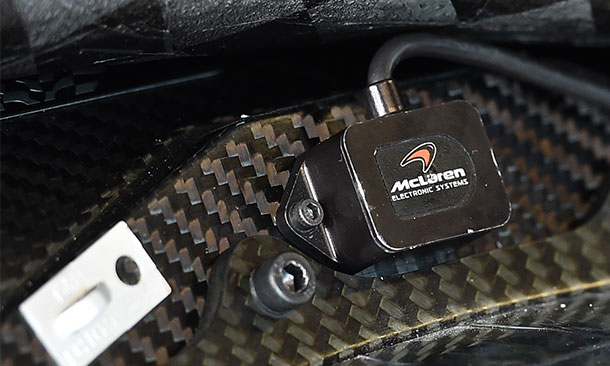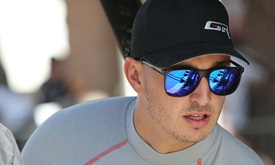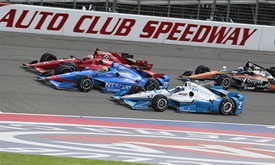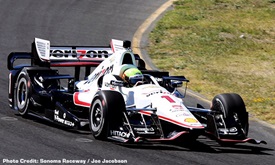Faster than an IndyCar? Its computer instructions
AUG 14, 2015
Verizon IndyCar Series cars whipping around the 2.5-mile Pocono Raceway at more than 220 mph next weekend in the penultimate race of the season are fast, thrilling and high-tech.
The race cars’ internal systems are a network of computers and controllers that monitor and fine-tune calibrations in real time for optimal performance lap after lap – all running on a common software platform.
In fact, the Engine Control Unit alone, supplied by McLaren Applied Technologies, processes about 600 million instructions per second. And maybe you thought it was all in the driver’s right foot?
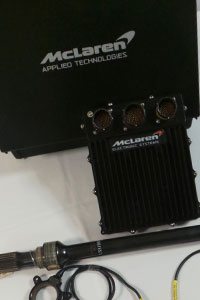 McLaren Applied Technologies’ components are prevalent in the Dallara IR-12 chassis and the 2.2-liter, twin-turbocharged, direct-injected V-6 engines of Chevrolet and Honda – from turbo boost and torque shaft sensors to the clutch control unit.
McLaren Applied Technologies’ components are prevalent in the Dallara IR-12 chassis and the 2.2-liter, twin-turbocharged, direct-injected V-6 engines of Chevrolet and Honda – from turbo boost and torque shaft sensors to the clutch control unit.
In this Q&A, McLaren Applied Technologies motorsport sales engineer Richard Hull provides a general rundown on the ECU:
Q: McLaren Applied Technologies supplies ECUs to INDYCAR, Formula One and NASCAR. What are – in a general comparison among the three – the number of input parameters and amount of data transmitted to an individual team in a typical race?
A: Although the ECUs used differ greatly in their capabilities from one series to the next, the one feature that unites them all is that they all use the same family of processors from our partner Freescale. In terms of their function, their operating and processing power is measured is MIPS – Million Instructions Per Second.
In Formula One (and also in many LMP1 cars), the TAG-320 ECU processes 7,000 MIPS, the TAG-400i for the Verizon IndyCar Series processes 600 MIPS and the TAG-400N in NASCAR processes 87MIPS, which differ due to the amount of parameters a driver and team are allowed to control within the car and the amount of technological freedom allowed thanks to the technical regulations in force in that series at any given time.
The TAG-400 family of ECUs is the most diversely used McLaren ECU and has been used in multiple series, including MotoGP, IndyCar, NASCAR, Formula E, LMP2 and GT Racing. The entire TAG McLaren ECU range shares the same software and data processing both on the car and off it, but the key differentiator is the processing power of each.
Q: What parts of the engine does the ECU control? What are some of the key challenges?
A: The TAG-400i in the Verizon IndyCar Series car is the central control unit, which has direct control over the ignition, injection, throttle and turbo. The key challenge ECU itself interfaces with many different other units within the car, but has overall control of these elements particularly. These various interfaces must combine to work in sync and simultaneously.
Q: The ECU for the Verizon IndyCar Series car must sustain processing power for a race car at an almost constant 12,000 RPM. By general comparison, how much more advanced is it than a typical passenger/production car (not the McLaren 650S or similar)? Or what are the primary differences?
A: The TAG-400i has to maintain highly accurate ignition and injection control for prolonged periods at high speed. Road cars very rarely reach even half of the RPM of an IndyCar, and when they do it is for very short periods of time.
Q: Where are we now in computing power and data transfer in comparison to 2011 – the year before the introduction of the Dallara IR-12 on the racetrack today?
A: The processing power of the new TAG-400i used in the current chassis is nearly 10 times more powerful with an additional benefit of higher logging rates.
Q: Is there a portal for the Verizon IndyCar Series engine manufacturers, Chevrolet through Ilmor and Honda Performance Development, to ask questions and use MAT as a sounding board?
A: Yes, many of McLaren Applied Technologies’ customers use a specially-designed portal for accessing latest software releases, feedback and for general communication.
Q: Where do you see future of ECU development going?
A: The customer is always asking for more data, in a lighter and smaller package. With this TAG-320 we have a very nimble, responsive and high-speed unit, but there is always room for continuous further development. At McLaren Applied Technologies we are constantly pushing the boundaries of the possible to develop ways to increase performance and allow more information to be provided to the customer, whether this be the engineers in the garage or the driver in the car.










